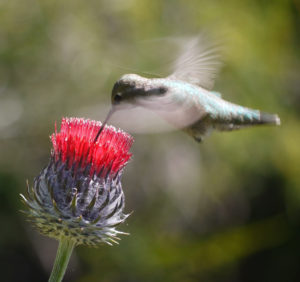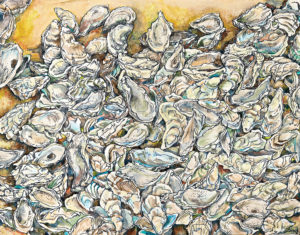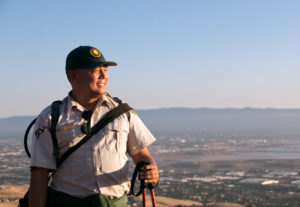
On a cloudy and brisk summer morning, I’m at the Point Pinole Regional Shoreline in Richmond, taking in its towering stands of eucalyptus, wide-open trails, and sweeping vistas of San Francisco Bay. Though it’s only 8 a.m. (and a Monday no less), entire families and individuals accompanied by their canine companions are already out for their morning constitutional. But I’m not here for the scenery or the fresh air. I’ve come to learn about a unique method of habitat restoration that’s underway at Giant Marsh, a tidal wetland running down a stretch of the Pinole shoreline immediately south of its main walking trails.
Spearheaded by the California Coastal Conservancy and 17 partners — including the East Bay Regional Park District (EBRPD), which manages Point Pinole — Giant Marsh’s $3 million restoration and enhancement began in 2019. It is the first large-scale endeavor of the Coastal Conservancy’s San Francisco Bay Living Shorelines Project, a hopeful effort to improve and enhance 100 acres of subtidal habitat—the offshore ecosystem living beneath the Bay’s low tide line. The restoration seeks to create new habitat for species while fortifying the shore against sea level rise and increasingly powerful storm surges caused by climate change. Worst-case scenarios project that sea levels along the Bay could rise anywhere between two and seven feet by 2100. The storm surges and loss of marsh plants could further erode the shoreline, as well as accelerate sediment loss from the Bay floor. All these conditions could impact ecosystem health, biodiversity, and species survival.
“This project represents a big push forward towards understanding how we can use habitat restoration to also protect shores,” says Katharyn Boyer, a coastal ecologist with San Francisco State University’s Estuary & Ocean Science Center and lead scientist on the project. Scientists are “using experimental shoreline enhancements and state-of-the-art monitoring to point us towards next steps in the evolution of living shoreline projects.”

The living shoreline idea isn’t a new one. Municipalities on the East and Gulf coasts have been applying it for the last 10 to 15 years, while the approach has been hampered in San Francisco Bay for various reasons, including a strict anti-fill policy. Despite such hurdles, the San Francisco Bay Living Shorelines project initiated a pilot study in 2012 along the San Rafael shoreline. By 2017, scientists estimated that 4 million native Olympia oysters (ostrea lurida) had settled on the oyster reef structures installed near San Rafael for the study, a significant gain for an oyster species that was common in the Bay during the 1800s yet declined in the next century. The reefs also created habitat for an increased number of invertebrates—such as crabs, mussels, shrimp, and fish—and the physical resistance that these reefs provided diminished incoming wave energy by 30 to 50 percent.
“[Similar restoration] can provide wave attenuation for hundreds of meters along the Point Pinole shoreline, along with food for waterbirds, shorebirds, diving ducks, fish, crab, and invertebrates that congregate in the treatment area,” according to Marilyn Latta, California Coastal Conservancy project manager of the Giant Marsh restoration.
Giant Marsh was chosen as a project site for its increasingly uncommon combination of sandy beaches and a rocky intertidal habitat—a mix that provides foraging opportunities and habitat diversity for a wide range of species.

In 2019, the restoration work at Giant Marsh began. Researchers installed a series of oyster reefs as well as eelgrass beds, Pacific Rockweed seaweed, and native plants that will help restore and enhance 100 acres of habitat throughout the 170-acre area.
From the bluffs where I stand with Matt Graul, EBRPD chief of stewardship and my guide for the morning, I try to see the oyster reefs, but can only make out a few lines of dots in the water. To get a better view, we walk down to the shore, where he hands me a pair of binoculars. Scanning the horizon, I don’t see any oysters at all—just three lines of what look like the tops of brick structures peeking out from the water.
“Those are the oyster blocks,” he tells me, confirming that this isn’t restoration work the public can easily observe. The project also uses something called oyster reef balls. Composed of a substance called baycrete—a mixture of 60 to 70 percent sand and oyster shell mined from San Francisco Bay—that is poured into molds, the large bean-bag-size reef balls become studded with the multicolored Olympia oysters. Hollow inside with openings on their walls, the reef balls provide both open space and crevices for fish to forage food and hide from their predators. Three sets of reef balls have been installed at varying heights here.
Remember, they are an exotic species in the Western United States, and are rapidly increasing their geographic range and range of habitats. Are they outcompeting or excluding native species in the process? How would we know? We have done almost nothing to monitor changes in the assemblage of mushroom species in areas before and and after the incursion of death caps.
Further Reading
Pringle et al, “The ectomycorrhizal fungus Amanita phalloides was introduced and is expanding its range on the west coast of North America,” Molecular Biology 2009
Lockhart et al, “Simultaneous emergence of multidrug-resistant Candida auris on 3 continents confirmed by whole-genome sequencing and epidemiological analyses,” Clinical Infectious Diseases 2017
Battalani et al, “Aflatoxin B1 contamination in maize in Europe increases due to climate change,” Scientific Reports 2016
»Point Pinole’s Giant Highway Staging Area (5551 Giant Hwy., Richmond) offers plenty of parking, bathrooms, drinking water, and a park shuttle stop.
Enter the park via Badger Bridge and head south on the Bay Trail to see the low marsh and marsh plain. Or take the Bay View Trail to the northwest for views looking over the oyster reef area.
»The reef balls and oyster blocks are only visible when tides are low. Check tide charts for Point Pinole. For the remainder of 2021, the lowest low tides occur in early December.
»A small sandy beach just south of Point Pinole’s fishing pier offers a good launch for paddling out to Giant Marsh. Check the San Francisco Bay Water Trail (sfbaywatertrail.org) for details, along with the shuttle
schedule from the parking areas to the
fishing pier (ebparks.org/parks/pt_pinole/).
In addition to providing food for birds in the Giant Marsh, oysters are also water-filtering machines—each one filters 30 liters an hour, enough to fill a decent-size backpack. Moreover, as their shells fall to the Bay floor, the detritus enriches the mud with nutrients and improves the environment for species like birds and sturgeon that feed on inverteb rates in the mudflats, Latta says.
While I’m too far away to see underwater, I’m told that in conjunction with the oyster reefs about 14,000 shoots of native eelgrass are reaching their fronds up from the Bay floor in a watery meadow. But the reefs I’m looking at now have been planted with Pacific rockweed, a mitten-shaped brown seaweed that project scientists think might provide moisture and shade for the oysters, protecting them from heat stress at low tides during hot weather.
“A major focus is on how different techniques can work together in these nature-based climate adaptation projects,” Boyer says. “Multiple lines of defense could be key to the ultimate success of these kinds of projects.”
The Living Shorelines’ project approach was informed by the 2010 San Francisco Bay Subtidal Habitat Goals report, a massive collaborative effort among five agencies and over 100 stakeholder partners. It recommended using natural bioengineering techniques—specifically, planting eelgrass and installing oyster reef balls—that would protect 8,000 acres of the Bay’s submerged habitats over a 50-year time frame.
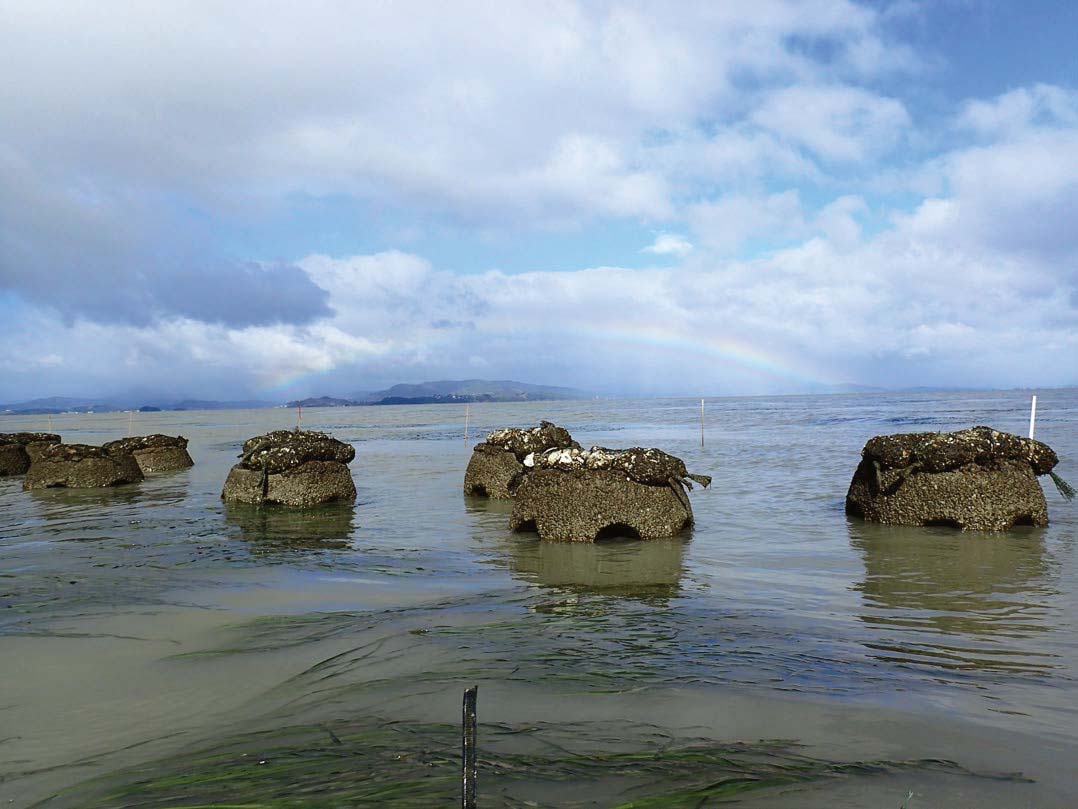
Turning away from the water, Graul points out a bright green stand of at least a dozen shocks of native Pacific cordgrass (spartina foliosa) growing along the shoreline—also known as the low marsh area. The project planted these both north and south of where we’re standing to help stabilize the shore and prevent erosion. A few feet tall, cordgrass filters contaminants from tidal water and provides nesting, foraging, and hiding spots from predators for various species, including the endangered Ridgway’s rail.
Along the sandy areas of shoreline, Boyer and her research team also planted California sea blite, an endangered climbing plant that can grow more than three feet high, creating protective habitat that could be especially valuable during high tides.
On the marsh plain behind us, more natives were planted, including marsh gumplant, which provides benefits similar to Pacific cordgrass’s. After removing all the invasive spartina from the area, the project staff will plant five native marsh species this winter, higher on the marsh’s upland transition zone. These plants may ultimately replace habitat that will be submerged by the end of the century as the rising sea level pushes the Bay waters higher.
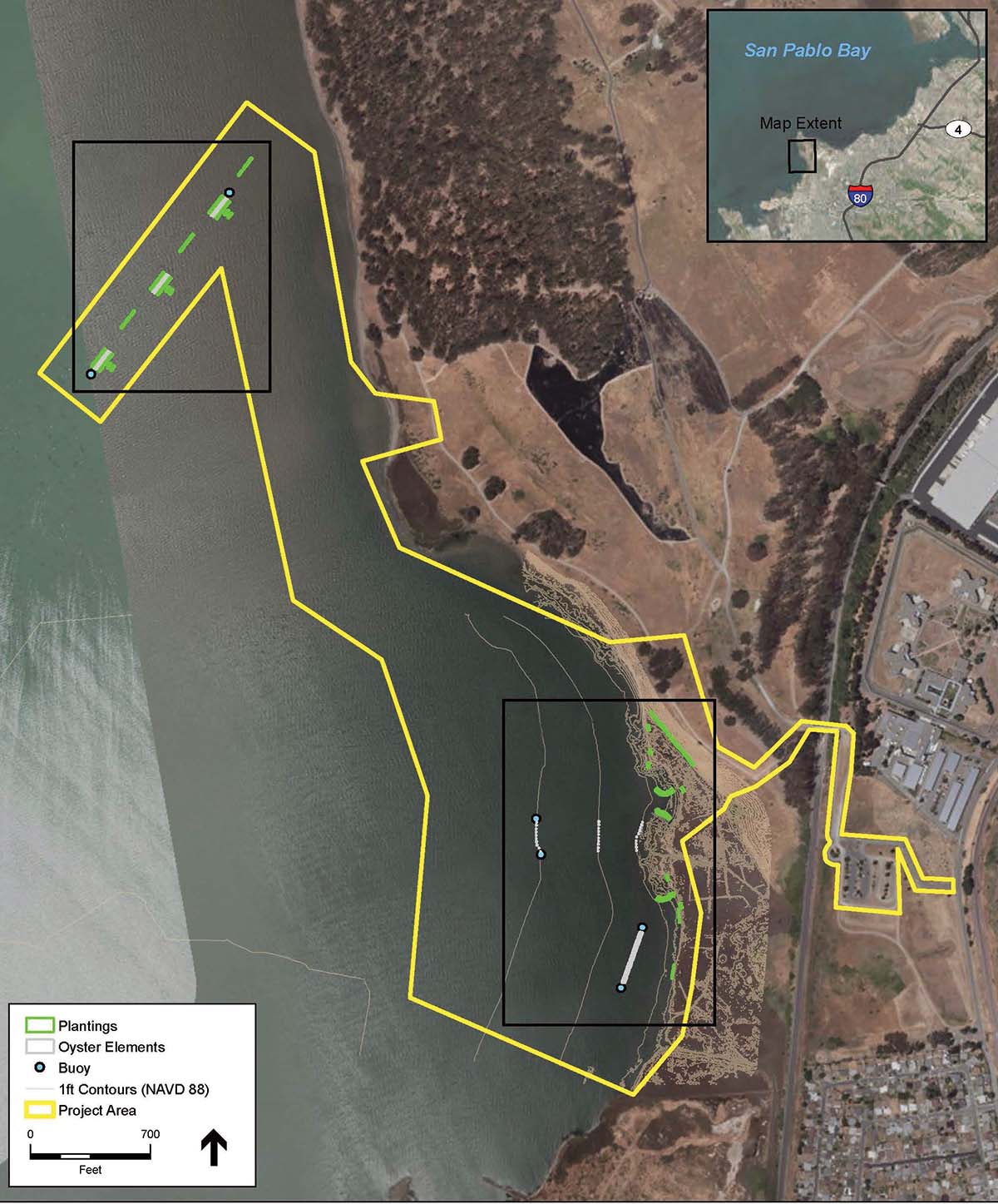
To see the final oyster reef treatment, we head north and back upland. The 180 reef balls in this location are farther offshore and topped with a bag of recycled oyster shells, and eelgrass has been planted both on the onshore and offshore sides of the reefs. “Oyster reefs may protect eelgrass plantings from high wave energy, and as eelgrass establishes it can stabilize and trap sediments, which may help to reduce erosion along marsh edges,” Boyer says.
Earlier in the morning, I mentioned to Graul that I hadn’t seen any birds. But as we survey the grand horizon before us from this higher vantage point, he suddenly points left. A few hundred feet away, a bird swoops in small circles, then hovers in the air. “Looks like a white-tailed kite that might have spotted prey—probably a mouse,” he says. The bird flaps its wings furiously, pointing its head downward.
Susan de la Cruz, an avian ecologist with the United States Geological Agency’s Western Ecological Research Center, tells me that birds are most common here during winter. Her team is studying the effects of the restoration and enhancement on the food supply for the birds—specifically shore, wading, and fish-eating birds—at Giant Marsh by looking at the number of invertebrates, such as crabs and aquatic insects, now living in the mud. They are also interested in the extent to which the birds are foraging in the restored habitats. To measure the number of invertebrates, the researchers have been collecting the mud around each of the reef treatments and identifying what invertebrate life is present, as well as assessing the biomass of these organisms. To evaluate the effect on bird foraging, researchers will use photos taken at timed intervals for two weeks every season by remote cameras focused on the oyster reefs, assessing the number of birds and their activity. To process the enormous amounts of data from the cameras, de la Cruz’s team has trained students at a local high school to look at each photo and record how many birds are present. (The data is checked through quality control procedures.)
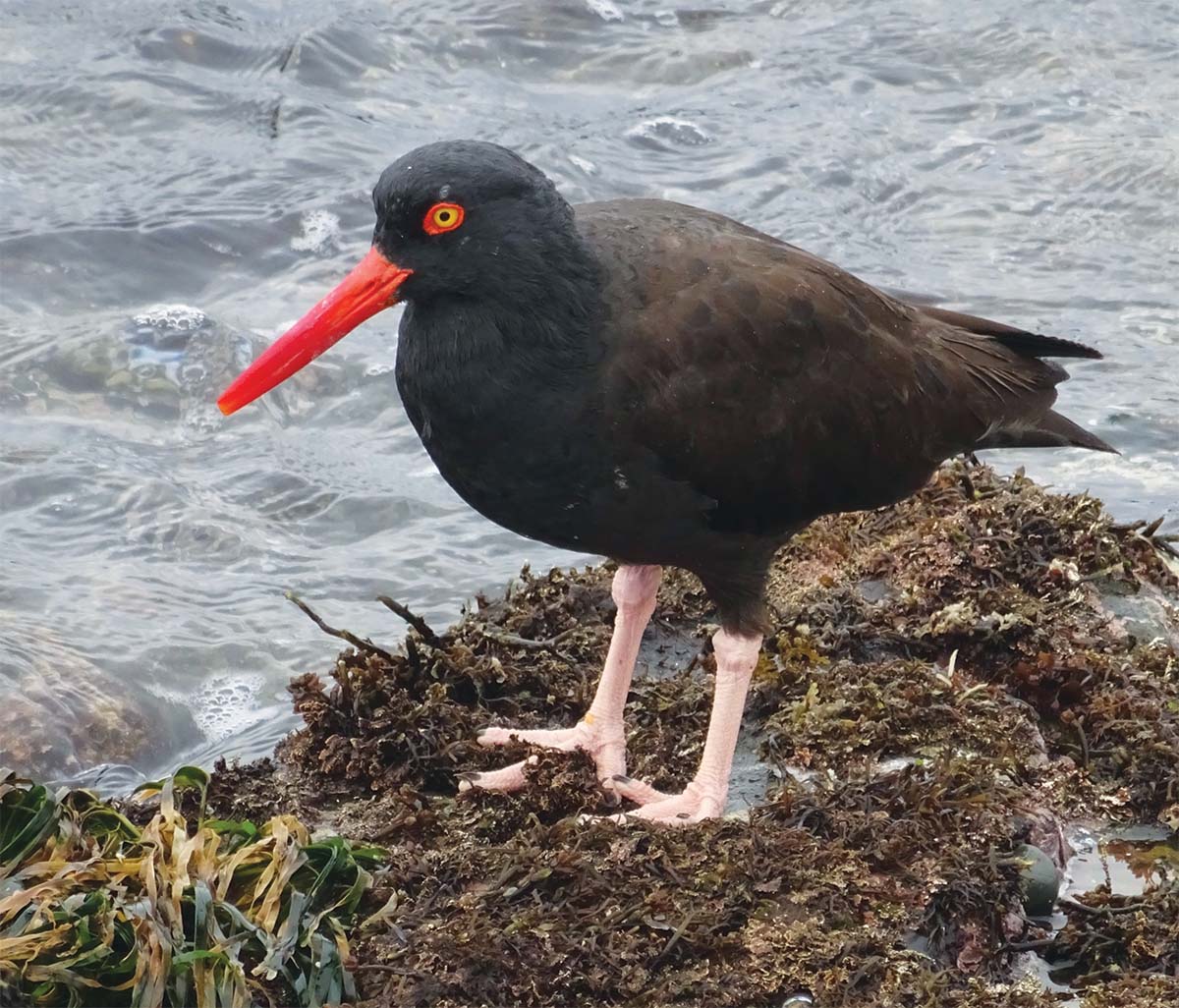
Three years into its five-year monitoring period, which will be complete in 2023, the Giant Marsh project shows promising results. As of July 2020, a minimum of 400,000 oysters were established across the 350 oyster reef balls and oyster blocks, which Latta says already meets the project’s criteria of a successful increase in native oyster restoration. The California sea blite plants and eelgrass are also making good headway, Boyer notes. And preliminary data show an increase in the biomass of invertebrates around the oyster reefs—an effect of what could be the added nutrients in the mud as well the treatments’ ability to change the mud’s temperature, says de la Cruz. Fish monitoring will begin next year once the habitat has been sufficiently established and will continue until the fifth year. “We are on track for where we want to be,” Latta says.
Despite the good results thus far, she emphasizes the need for more.
“There’s an urgency with this project, given there’s a lot that we can’t turn back in terms of global sea level rise and other climate impacts,” Latta says. “These projects show that we can truly help to provide better habitats and buffer our shorelines. We need to be building 10 or 20 of these projects every year instead of one every few years.”

